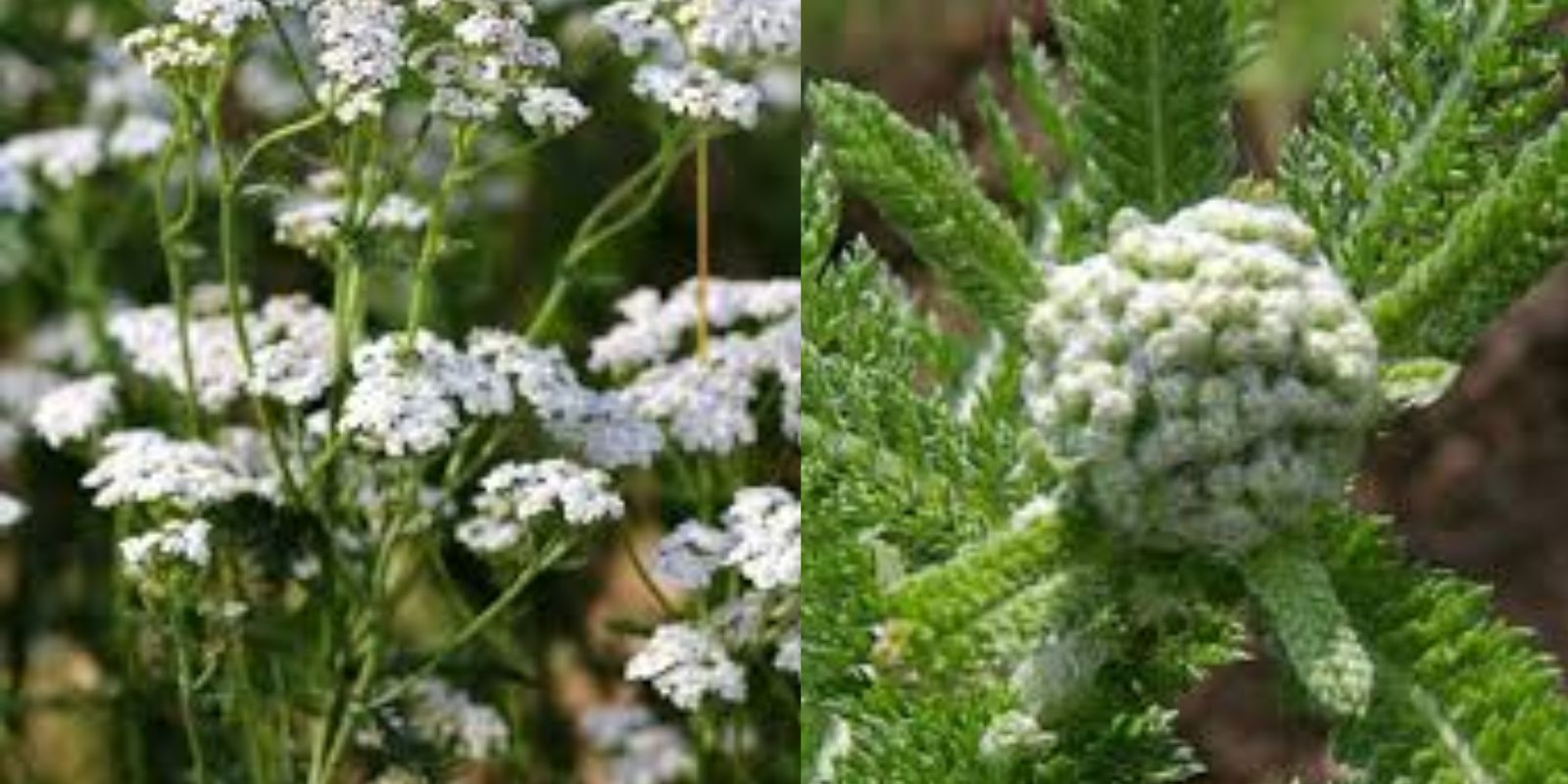Yarrow (Achillea millefolium) is a resilient, low-maintenance plant that’s been valued for centuries in herbal medicine, sustainable gardening, and even folklore. Though unassuming in appearance, yarrow has potent benefits that make it a fantastic addition to any garden. From its healing properties to its natural pest-control abilities, yarrow is a versatile plant worth exploring in detail. This article delves into why yarrow is invaluable, its diverse applications, and how you can incorporate it into your garden and everyday life.
1. Why Grow Yarrow?
Yarrow thrives with little care, making it ideal for all types of gardeners. Native to temperate regions, this perennial is hardy, drought-tolerant, and a wonderful pollinator attractor. The plant’s feathery foliage and clusters of small, colorful flowers add an aesthetic appeal to any garden. Beyond its beauty, yarrow’s medicinal and ecological benefits make it a must-have.
2. Growing Yarrow: Basic Care Tips
Sunlight
Yarrow flourishes in full sun, so choose a sunny location in your garden to ensure healthy, vibrant growth. It can tolerate partial shade, but direct sunlight promotes better blooming and stronger stems.
Soil and Drainage
Yarrow prefers dry, well-drained soil and can grow in rocky or sandy substrates. Avoid nutrient-rich soil, as this can lead to weak and overly tall plants.
Watering
This plant is highly drought-resistant once established, needing minimal watering. Overwatering can lead to root rot, so water sparingly.
Spacing and Airflow
Plant yarrow 12-18 inches apart to give it room to spread. Adequate spacing also promotes good airflow, which helps prevent fungal diseases.
3. Using Yarrow as a Natural Pest Repellent
Yarrow is known for its ability to repel certain insect pests. Its strong fragrance deters common garden invaders like aphids, mites, and beetles. By planting yarrow alongside other vulnerable plants, you create a natural pest barrier. Additionally, yarrow attracts beneficial insects, such as ladybugs and lacewings, which feed on pests.
4. Medicinal Uses: The Healing Power of Yarrow
Historically, yarrow has been used in various cultures as a healing herb. It’s especially known for its anti-inflammatory, antiseptic, and astringent properties. Here are a few practical ways to use yarrow for medicinal purposes:
- Wound Healing
Yarrow is a natural styptic, meaning it helps stop bleeding. The leaves can be crushed and applied to cuts or scrapes to promote clotting and protect against infection. - Tea for Digestive Health
Yarrow tea is commonly used to aid digestion, reduce bloating, and alleviate cramps. To make tea, steep 1-2 teaspoons of dried yarrow in hot water for 5-10 minutes. Sip slowly for best results. - Anti-Inflammatory Properties
As a natural anti-inflammatory, yarrow can relieve muscle pain, headaches, and arthritis symptoms. The plant can be used in poultices, infused oils, or baths to reduce inflammation.
5. Yarrow as a Companion Plant
Yarrow’s pest-repellent qualities make it an excellent companion plant. Its presence helps to shield nearby plants from pests, particularly tomatoes, carrots, and cucumbers. By improving the garden’s overall health, yarrow reduces the need for chemical interventions and enhances biodiversity.
6. Harvesting and Storing Yarrow
When to Harvest
Harvest yarrow flowers in the early stages of blooming, as this is when they’re most potent. You can also harvest the leaves, though they’re generally less fragrant than the flowers.
Drying and Storing
Hang yarrow in small bundles to dry in a well-ventilated space away from direct sunlight. Once dry, store in an airtight container. Dried yarrow can be used in teas, tinctures, or homemade beauty products.
7. Creative Ways to Use Yarrow in Your Garden
- Natural Fertilizer
Yarrow can boost the nutrient content in compost. The leaves contain essential minerals that enrich compost piles and promote plant growth when used as a soil amendment. - Pollinator Magnet
The flowers are excellent for attracting bees and butterflies, which are essential for pollination. Plant yarrow near flowering vegetables or fruit plants to improve yields. - Living Mulch
Yarrow’s dense foliage works as a natural mulch, reducing weed growth and helping retain moisture in the soil.
8. Folklore and Cultural Significance
In folklore, yarrow was often called “soldier’s woundwort” for its use in treating battlefield wounds. The Greeks called it “Achillea,” inspired by the warrior Achilles, who is said to have used it on the battlefield. Additionally, some cultures believed yarrow could ward off evil, and it was often used in love charms and rituals.
9. Yarrow as a Soil Conditioner
Yarrow has a deep root system that helps loosen compacted soil and improves water absorption. It’s also known as a dynamic accumulator, meaning it draws up nutrients from deep within the soil, enriching the topsoil and making nutrients available to nearby plants.
10. Sustainable and Eco-Friendly Gardening with Yarrow
Using yarrow as a natural pesticide, fertilizer, and pollinator attractor promotes eco-friendly gardening practices. It reduces the need for synthetic chemicals, enhancing garden biodiversity and fostering a self-sustaining environment.
11. Common Questions about Growing Yarrow
- Is yarrow invasive?
While it can spread, especially in nutrient-rich soil, regular pruning keeps yarrow under control. - Can I grow yarrow indoors?
Yarrow can be grown indoors if provided with ample sunlight, though it thrives best outdoors.
12. Final Thoughts: Embrace Yarrow in Your Garden
Whether you’re a seasoned gardener or just starting out, yarrow’s diverse uses make it a valuable and rewarding plant to grow. Its hardiness, low maintenance, and health benefits can transform your garden into a thriving, sustainable haven. Embrace yarrow’s hidden powers and enjoy a garden that’s healthier, more resilient, and a haven for beneficial insects.
Engage with us! Have you tried growing yarrow, or do you use it in any unique ways? Share your tips and stories below! 🌼

